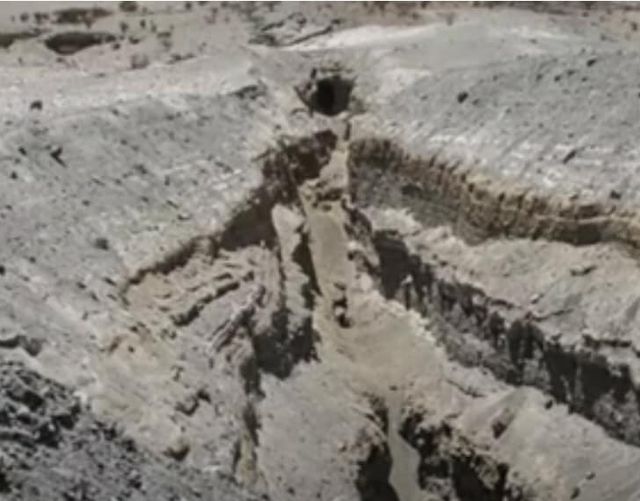Due to various factors, our planet is undergoing constant changes, a matter of growing concern for many. While these changes might not always be readily apparent, photographs serve as a powerful tool for depicting the true extent of the situation. Images released to the public in 2023 shed light on the significant damage occurring as parts of Africa experience literal fragmentation.
In Kenya, two land masses have begun to separate over recent years, a development that has taken residents by surprise. The chasm between them is so substantial that a new ocean is forming in the divide, a phenomenon expected to become fully realized in the future.

This transformation isn’t confined to Kenya alone; neighboring African countries like Zambia and Uganda may eventually develop coastlines, a striking shift considering their current landlocked status. Research conducted by experts has identified the East African Rift as the site where this geological process began, with the borders of three tectonic plates gradually diverging.
The crack, stretching 35 miles long, first appeared in the Ethiopian deserts in 2005. Christopher Moore, a Ph.D. doctoral student at the University of Leeds, notes that this region offers a unique opportunity to study how a continental rift transitions into an oceanic rift. Utilizing satellite radar technology, Moore monitored volcanic activity in the East African region, where the continent’s gradual breakup is most evident.

The crack lies at the convergence of the African, Arabian, and Somali tectonic plates. Over the past 30 million years, the Arabian plate has been steadily moving away from the African continent, resulting in the widening gap. While the Arabian plate shifts at a rate of approximately one inch per year, the African and Somali plates move even slower, at around half an inch to 0.2 inches annually.
Experts predict that this gap will continue to widen, eventually leading to the formation of a separate continent in East Africa. Ken Macdonald, a marine geophysicist and professor emeritus at the University of California, explains that with GPS measurements, movements can be detected down to a few millimeters per year, providing valuable insights into the ongoing geological processes. Ultimately, the Afar region is expected to flood, giving rise to a new ocean and a distinct landmass in East Africa.

